
RANKS
In the Army, your rank not only indicates your pay grade, but also the amount of responsibility you hold. Corporals, for example, may be responsible for a small team of Soldiers, while a major general could hold command of anywhere between 10,000-15,000 Soldiers. Learn about the ranks of each Soldier type by clicking on the tabs below.
While the amount of time spent in each rank is based on averages, you can often accelerate the promotion process by taking advantage of additional training and schooling opportunities.
PRIVATE (PVT)
Private is the lowest rank. Most Soldiers receive this rank during Basic Combat Training. This rank does not carry an insignia.

PRIVATE SECOND CLASS (PV2)
Enlisted Soldiers generally receive this rank after either completion of Basic Combat Training, or six months of Army service.

PRIVATE FIRST CLASS (PFC)
Soldiers are generally promoted to this level within a year by request of a supervisor. Soldiers serving at this rank make up the backbone of the Army. Their primary role is to carry out orders and complete missions.
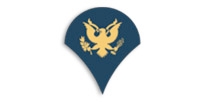
SPECIALIST (SPC)
A specialist can manage other lower-ranked enlisted Soldiers. A Soldier can be promoted to this rank after serving a minimum of two years and attending a training class. Recruits with a four-year degree may enter Basic Combat Training as a specialist.

CORPORAL (CPL)
Corporal is the base level of the noncommissioned officer (NCO) ranks. Corporals serve as team leader of the smallest Army units. Like sergeants, they are responsible for individual training, personal appearance and cleanliness of Soldiers.
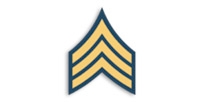
SERGEANT (SGT)
Sergeants typically command a fire team of around five Soldiers. Sergeants oversee Soldiers in their daily tasks, and are expected to set a standard for lower-ranked Soldiers to live up to.
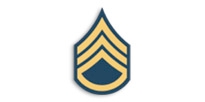
STAFF SERGEANT (SSG)
A staff sergeant commands a squad (nine to 10 Soldiers). Often, a staff sergeant will have one or more sergeants under his or her leadership. They are responsible for developing, maintaining and utilizing the full range of a Soldier's potential.
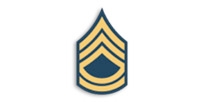
SERGEANT FIRST CLASS (SFC)
As the key assistant and advisor to the platoon leader, the sergeant first class generally has 15 to 18 years of Army experience.
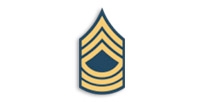
MASTER SERGEANT (MSG)
The master sergeant is the principal noncommissioned officer at the battalion level and higher.
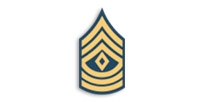
FIRST SERGEANT (1SG)
The first sergeant is the principal NCO and life-blood of a company. He is the disciplinarian and counselor. He instructs other sergeants, advises the commander and helps train all enlisted Soldiers. He assists officers at the company level (62 to 190 Soldiers).
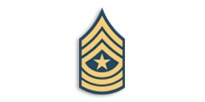
SERGEANT MAJOR (SGM)
Sergeants major serve as the chief administrative assistants for an Army headquarters, but their sphere of influence regarding leadership is generally limited to those directly under their charge. They are key enlisted members of staff elements at battalion level or higher.
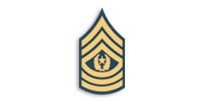
COMMAND SERGEANT MAJOR (CSM)
Command sergeants major are the senior enlisted advisors to the commanding officer. They carry out policies and standards and advise the commander on the performance, training, appearance and conduct of enlisted Soldiers. A command sergeant major is assignable to battalion level or higher.

SERGEANT MAJOR OF THE ARMY
There's only one Sergeant Major of the Army. The SMA oversees all noncommissioned officers. He serves as the senior enlisted advisor and consultant to the Chief of Staff of the Army.

WARRANT OFFICER (WO1)
Warrant officers are the technical and tactical experts of the Army. At the base-level rank, warrant officers primarily support operations from team or detachment through battalion. Warrant officers are appointed by the Secretary of the Army.

CHIEF WARRANT OFFICER 2 (CW2)
The chief warrant officer two is an intermediate-level technical and tactical expert. He or she supports levels of operations from team or detachment through battalion.

CHIEF WARRANT OFFICER 3 (CW3)
The chief warrant officer three is an advanced-level technical and tactical expert. They primarily support operations from team or detachment through brigade.

CHIEF WARRANT OFFICER 4 (CW4)
The chief warrant officer four is a senior-level technical and tactical expert. They primarily support battalion, brigade, division, corps, and echelons above corps operations.

CHIEF WARRANT OFFICER 5 (CW5)
The chief warrant officer five is a master-level technical and tactical expert. They primarily support brigade, division, corps, echelons above corps and major command operations. They have special warrant officer leadership and representation responsibilities within their respective commands.

SECOND LIEUTENANT (2LT)
Most officers enter the Army at second lieutenant. They lead platoon-size units consisting of a platoon sergeant and two or more squads (16 to 44 Soldiers).

FIRST LIEUTENANT (1LT)
Officers generally reach the rank of first lieutenant after 18 to 24 months of service. Soldiers at this rank may lead more specialized weapons platoons and indirect fire computation centers.

CAPTAIN (CPT)
The captain commands and controls company-sized units (62 to 190 Soldiers). He or she may also instruct at service schools and combat training centers or serve as a staff officer at the battalion level.

MAJOR (MAJ)
The major serves as the primary staff officer for brigade and task force command and manages personnel, logistical and operational missions.

LIEUTENANT COLONEL (LTC)
The lieutenant colonel typically commands battalion-sized units (300 to 1,000 Soldiers) with a command sergeant major as an NCO assistant. He or she may also be selected for brigade and task force executive officer.

COLONEL (COL)
The colonel typically commands brigade-sized units (3,000 to 5,000 Soldiers), with a command sergeant major as principal NCO assistant. They may also serve as the chief of divisional-level staff agencies.

BRIGADIER GENERAL (BG)
The brigadier general serves as deputy commander to the commanding general for Army divisions. This rank is responsible for overseeing the staff's planning and coordination of a mission.

MAJOR GENERAL (MG)
The major general typically commands division-sized units (10,000 to 15,000 Soldiers).

LIEUTENANT GENERAL (LTG)
The lieutenant general typically commands corps-sized units (20,000 to 45,000 Soldiers).

GENERAL (GEN)
The senior level of commissioned officer typically has more than 30 years of experience and service. They command all operations that fall within their geographical area.

GENERAL OF THE ARMY (GOA)
This rank is only achievable in times of war, where the commanding officer must be equal or of higher rank than those commanding armies from allied nations. The last officers to hold this rank served during and immediately following World War II.



